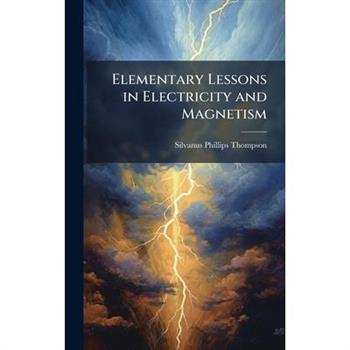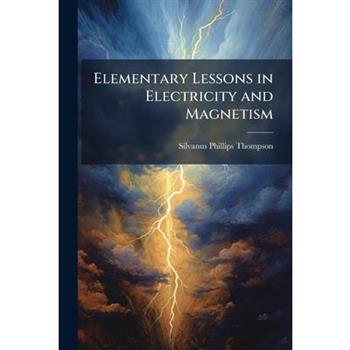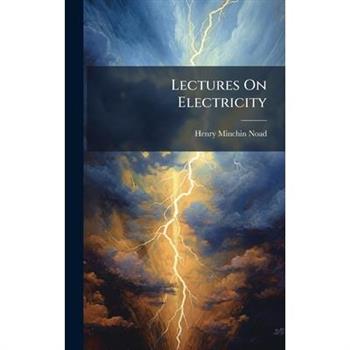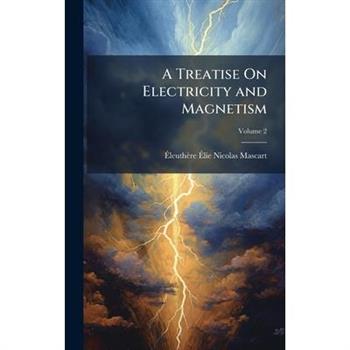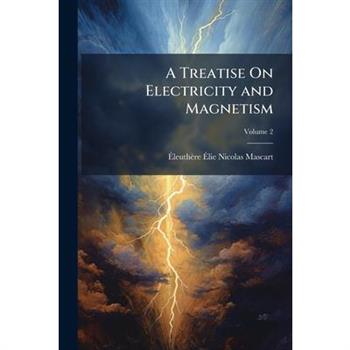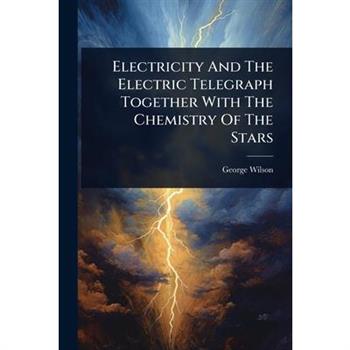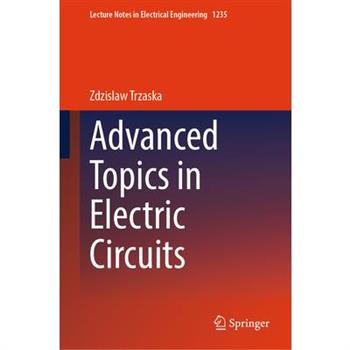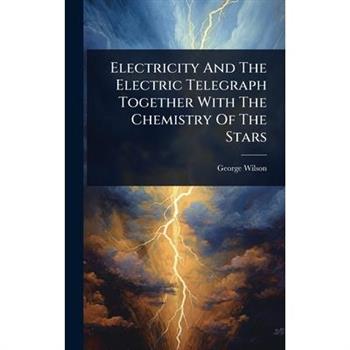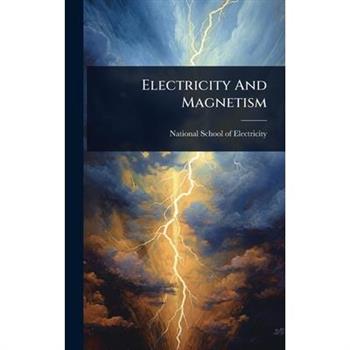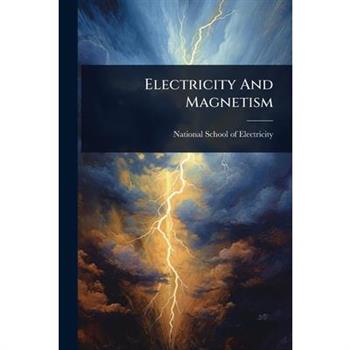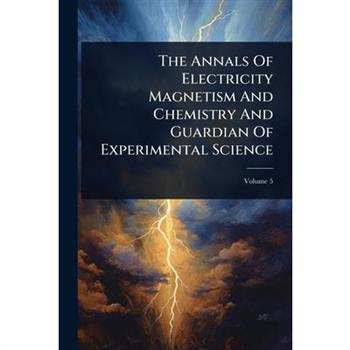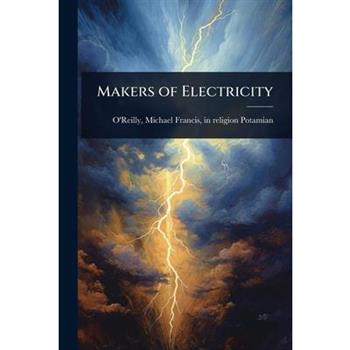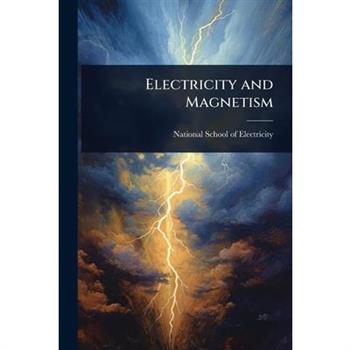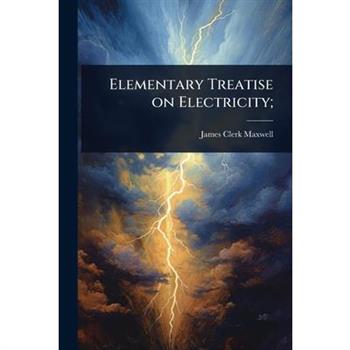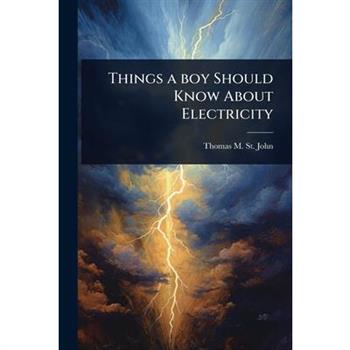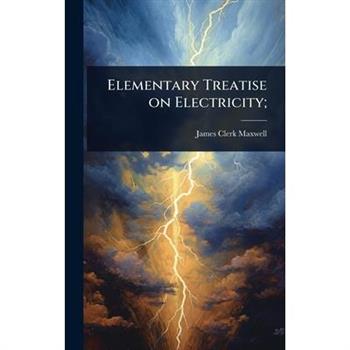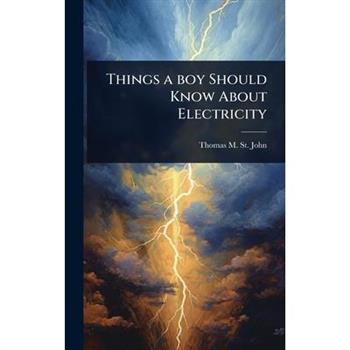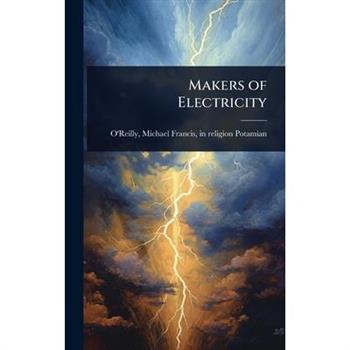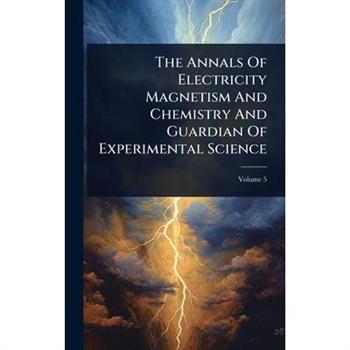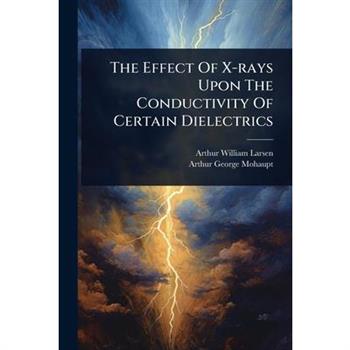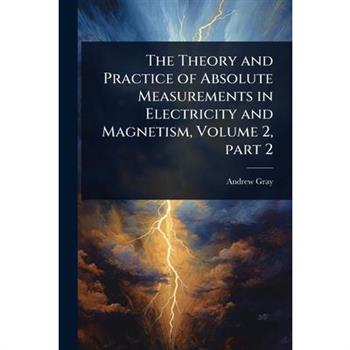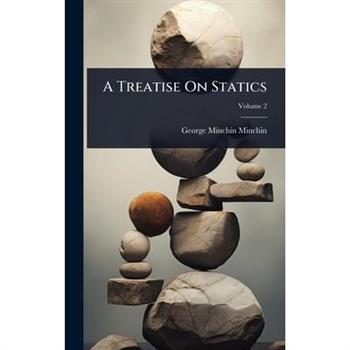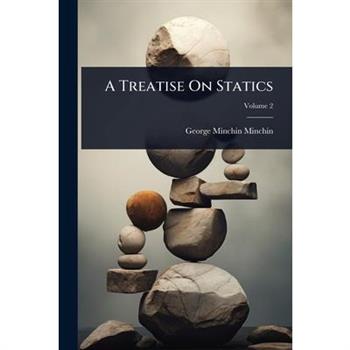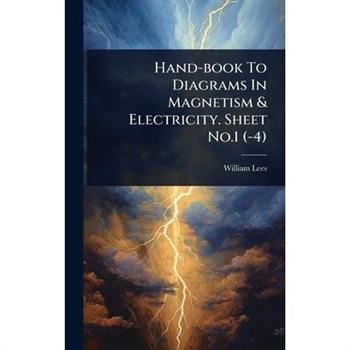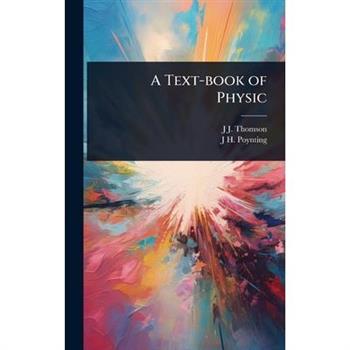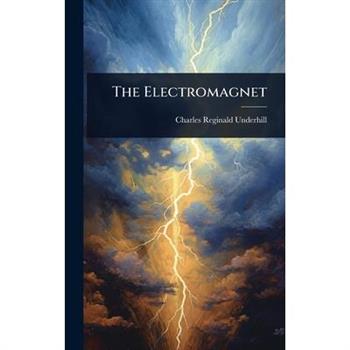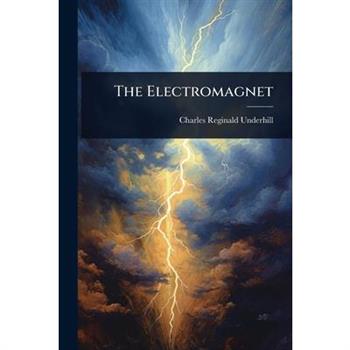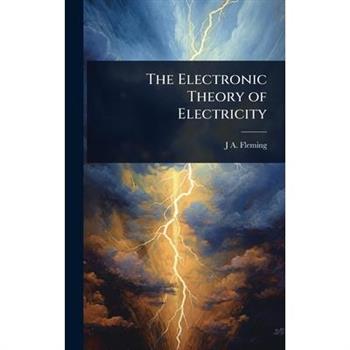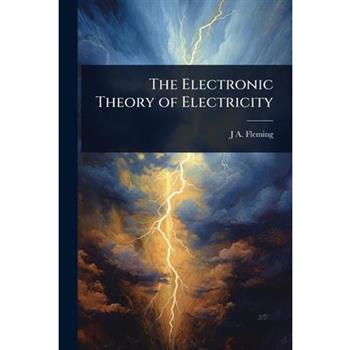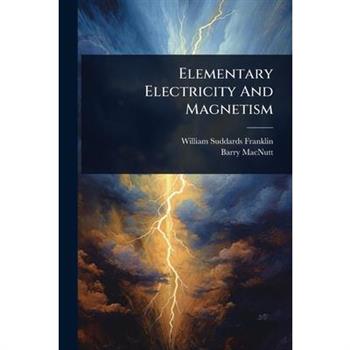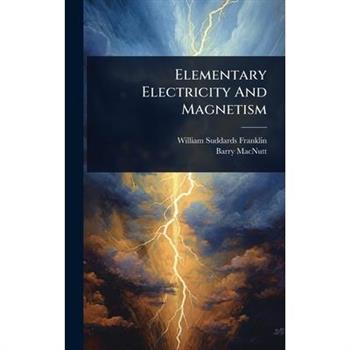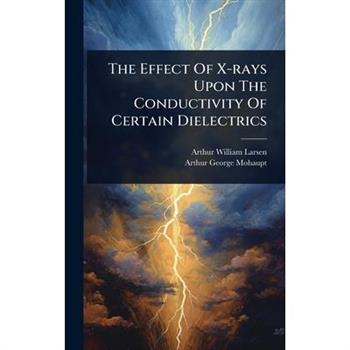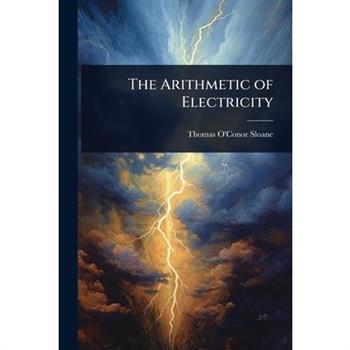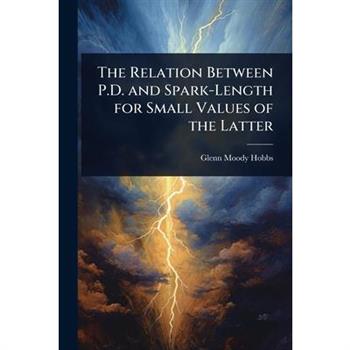Blackout-Proof Apartment
Power outages don't care that you rent on the 12th floor. Blackout-Proof Apartment arms every tenant with plug-and-play hacks for light, power, and clean water-no landlord permission, no drilling, no diesel fumes. Prep coach Dana Li shows you how to: Snap-together battery + fold-out solar kits that keep phones, laptops, and a mini-fridge alive.Stash collapsible water tanks under a bed and purify gallons in minutes.Rig renter-safe insulation, LED lantern walls, and smart plugs that stretch every watt.Build a grab-and-go blackout bin, complete with humor boosters for long dark nights.Team up with neighbors for shared power and water stations that turn crises into community wins.From choosing whisper-quiet generators to negotiating balcony panel setups, this guide lets you thrive-no matter how long the lights stay off.
The Discharge of Electricity Through Gases
Delve into the groundbreaking lectures of Joseph John Thomson, renowned physicist and Nobel laureate, in "The Discharge of Electricity Through Gases." This volume captures Thomson's insightful presentations delivered during the Sesquicentennial Celebration of Princeton University. Thomson meticulously explores the phenomena surrounding the conduction of electricity through gases, providing a detailed examination of ionization, discharge mechanisms, and the behavior of charged particles. A cornerstone of early 20th-century physics, Thomson's work laid the foundation for advancements in atomic physics and electronics. This edition offers readers a rare opportunity to engage with the original ideas and experimental observations that shaped our understanding of matter and energy. It is essential reading for historians of science, physicists, and anyone interested in the development of modern scientific thought.This work has been selected by scholars as being culturally important, and is part of the knowledge base of civilization as we know it. This work was reproduced from the original artifact, and remains as true to the original work as possible. Therefore, you will see the original copyright references, library stamps (as most of these works have been housed in our most important libraries around the world), and other notations in the work.This work is in the public domain in the United States of America, and possibly other nations. Within the United States, you may freely copy and distribute this work, as no entity (individual or corporate) has a copyright on the body of the work.As a reproduction of a historical artifact, this work may contain missing or blurred pages, poor pictures, errant marks, etc. Scholars believe, and we concur, that this work is important enough to be preserved, reproduced, and made generally available to the public. We appreciate your support of the preservation process, and thank you for being an important part of keeping this knowledge alive and relevant.
Elementary Lessons in Electricity and Magnetism
"Elementary Lessons in Electricity and Magnetism" by Silvanus P. Thompson is a comprehensive introduction to the fundamental principles governing electrical and magnetic phenomena. Designed as a textbook for students, it offers a clear and systematic approach to understanding these essential concepts. The book explores the nature of electricity, magnetic fields, electromagnetism, and their applications, with detailed explanations and illustrative examples.Thompson's work provides a solid foundation in classical electromagnetism, making it an invaluable resource for anyone seeking to grasp the basics of electricity and magnetism. It remains relevant for its clarity and thoroughness, appealing to both students and enthusiasts interested in the history and development of physics.This work has been selected by scholars as being culturally important, and is part of the knowledge base of civilization as we know it. This work was reproduced from the original artifact, and remains as true to the original work as possible. Therefore, you will see the original copyright references, library stamps (as most of these works have been housed in our most important libraries around the world), and other notations in the work.This work is in the public domain in the United States of America, and possibly other nations. Within the United States, you may freely copy and distribute this work, as no entity (individual or corporate) has a copyright on the body of the work.As a reproduction of a historical artifact, this work may contain missing or blurred pages, poor pictures, errant marks, etc. Scholars believe, and we concur, that this work is important enough to be preserved, reproduced, and made generally available to the public. We appreciate your support of the preservation process, and thank you for being an important part of keeping this knowledge alive and relevant.
Elementary Lessons in Electricity and Magnetism
"Elementary Lessons in Electricity and Magnetism" by Silvanus P. Thompson is a comprehensive introduction to the fundamental principles governing electrical and magnetic phenomena. Designed as a textbook for students, it offers a clear and systematic approach to understanding these essential concepts. The book explores the nature of electricity, magnetic fields, electromagnetism, and their applications, with detailed explanations and illustrative examples.Thompson's work provides a solid foundation in classical electromagnetism, making it an invaluable resource for anyone seeking to grasp the basics of electricity and magnetism. It remains relevant for its clarity and thoroughness, appealing to both students and enthusiasts interested in the history and development of physics.This work has been selected by scholars as being culturally important, and is part of the knowledge base of civilization as we know it. This work was reproduced from the original artifact, and remains as true to the original work as possible. Therefore, you will see the original copyright references, library stamps (as most of these works have been housed in our most important libraries around the world), and other notations in the work.This work is in the public domain in the United States of America, and possibly other nations. Within the United States, you may freely copy and distribute this work, as no entity (individual or corporate) has a copyright on the body of the work.As a reproduction of a historical artifact, this work may contain missing or blurred pages, poor pictures, errant marks, etc. Scholars believe, and we concur, that this work is important enough to be preserved, reproduced, and made generally available to the public. We appreciate your support of the preservation process, and thank you for being an important part of keeping this knowledge alive and relevant.
The Discharge of Electricity Through Gases
Delve into the groundbreaking lectures of Joseph John Thomson, renowned physicist and Nobel laureate, in "The Discharge of Electricity Through Gases." This volume captures Thomson's insightful presentations delivered during the Sesquicentennial Celebration of Princeton University. Thomson meticulously explores the phenomena surrounding the conduction of electricity through gases, providing a detailed examination of ionization, discharge mechanisms, and the behavior of charged particles. A cornerstone of early 20th-century physics, Thomson's work laid the foundation for advancements in atomic physics and electronics. This edition offers readers a rare opportunity to engage with the original ideas and experimental observations that shaped our understanding of matter and energy. It is essential reading for historians of science, physicists, and anyone interested in the development of modern scientific thought.This work has been selected by scholars as being culturally important, and is part of the knowledge base of civilization as we know it. This work was reproduced from the original artifact, and remains as true to the original work as possible. Therefore, you will see the original copyright references, library stamps (as most of these works have been housed in our most important libraries around the world), and other notations in the work.This work is in the public domain in the United States of America, and possibly other nations. Within the United States, you may freely copy and distribute this work, as no entity (individual or corporate) has a copyright on the body of the work.As a reproduction of a historical artifact, this work may contain missing or blurred pages, poor pictures, errant marks, etc. Scholars believe, and we concur, that this work is important enough to be preserved, reproduced, and made generally available to the public. We appreciate your support of the preservation process, and thank you for being an important part of keeping this knowledge alive and relevant.
Lectures On Electricity
"Lectures on Electricity," by Henry Minchin Noad, offers a comprehensive exploration of electrical phenomena as understood in the mid-19th century. This meticulously detailed work covers a range of topics, including galvanism, magnetism, electromagnetism, and magneto- and thermo-electricity. Noad's lectures provide insights into the early scientific investigations and theories that laid the groundwork for modern electrical engineering. Originally published in 1844, this book serves as a valuable resource for historians of science, electrical engineers, and anyone interested in the evolution of our understanding of electricity. The text is enriched with detailed descriptions and experimental observations, making it an essential addition to any scientific library. This historical record captures a pivotal moment in the development of electrical science, showcasing the discoveries and innovations that shaped the field.This work has been selected by scholars as being culturally important, and is part of the knowledge base of civilization as we know it. This work was reproduced from the original artifact, and remains as true to the original work as possible. Therefore, you will see the original copyright references, library stamps (as most of these works have been housed in our most important libraries around the world), and other notations in the work.This work is in the public domain in the United States of America, and possibly other nations. Within the United States, you may freely copy and distribute this work, as no entity (individual or corporate) has a copyright on the body of the work.As a reproduction of a historical artifact, this work may contain missing or blurred pages, poor pictures, errant marks, etc. Scholars believe, and we concur, that this work is important enough to be preserved, reproduced, and made generally available to the public. We appreciate your support of the preservation process, and thank you for being an important part of keeping this knowledge alive and relevant.
A Treatise On Electricity and Magnetism
A Treatise On Electricity and Magnetism, Volume 2: Methods of Measurement and Applications, by ?leuth癡re ?lie Nicolas Mascart, is a comprehensive exploration of electromagnetism as understood in the late 19th century. This volume delves into the practical methods of measurement and the diverse applications of electricity and magnetism. Mascart provides detailed explanations of experimental techniques and theoretical frameworks relevant to the field. This historical work offers valuable insights into the development of electrical science and its impact on technology and scientific understanding. It remains a significant resource for historians of science, physicists, and anyone interested in the foundations of electromagnetism.This work has been selected by scholars as being culturally important, and is part of the knowledge base of civilization as we know it. This work was reproduced from the original artifact, and remains as true to the original work as possible. Therefore, you will see the original copyright references, library stamps (as most of these works have been housed in our most important libraries around the world), and other notations in the work.This work is in the public domain in the United States of America, and possibly other nations. Within the United States, you may freely copy and distribute this work, as no entity (individual or corporate) has a copyright on the body of the work.As a reproduction of a historical artifact, this work may contain missing or blurred pages, poor pictures, errant marks, etc. Scholars believe, and we concur, that this work is important enough to be preserved, reproduced, and made generally available to the public. We appreciate your support of the preservation process, and thank you for being an important part of keeping this knowledge alive and relevant.
A Treatise On Electricity and Magnetism
A Treatise On Electricity and Magnetism, Volume 2: Methods of Measurement and Applications, by ?leuth癡re ?lie Nicolas Mascart, is a comprehensive exploration of electromagnetism as understood in the late 19th century. This volume delves into the practical methods of measurement and the diverse applications of electricity and magnetism. Mascart provides detailed explanations of experimental techniques and theoretical frameworks relevant to the field. This historical work offers valuable insights into the development of electrical science and its impact on technology and scientific understanding. It remains a significant resource for historians of science, physicists, and anyone interested in the foundations of electromagnetism.This work has been selected by scholars as being culturally important, and is part of the knowledge base of civilization as we know it. This work was reproduced from the original artifact, and remains as true to the original work as possible. Therefore, you will see the original copyright references, library stamps (as most of these works have been housed in our most important libraries around the world), and other notations in the work.This work is in the public domain in the United States of America, and possibly other nations. Within the United States, you may freely copy and distribute this work, as no entity (individual or corporate) has a copyright on the body of the work.As a reproduction of a historical artifact, this work may contain missing or blurred pages, poor pictures, errant marks, etc. Scholars believe, and we concur, that this work is important enough to be preserved, reproduced, and made generally available to the public. We appreciate your support of the preservation process, and thank you for being an important part of keeping this knowledge alive and relevant.
Electricity And The Electric Telegraph Together With The Chemistry Of The Stars
璽€œElectricity And The Electric Telegraph Together With The Chemistry Of The Stars璽€ by George Wilson explores the scientific understanding of electricity and its practical application in the electric telegraph during the 19th century. Additionally, it delves into the composition of stars, presenting arguments about the potential for inhabitants on other celestial bodies. This volume offers a glimpse into the scientific curiosity and early explorations of the universe that characterized the era, blending terrestrial technology with cosmic speculation. A valuable resource for those interested in the history of science and the evolution of scientific thought.This work has been selected by scholars as being culturally important, and is part of the knowledge base of civilization as we know it. This work was reproduced from the original artifact, and remains as true to the original work as possible. Therefore, you will see the original copyright references, library stamps (as most of these works have been housed in our most important libraries around the world), and other notations in the work.This work is in the public domain in the United States of America, and possibly other nations. Within the United States, you may freely copy and distribute this work, as no entity (individual or corporate) has a copyright on the body of the work.As a reproduction of a historical artifact, this work may contain missing or blurred pages, poor pictures, errant marks, etc. Scholars believe, and we concur, that this work is important enough to be preserved, reproduced, and made generally available to the public. We appreciate your support of the preservation process, and thank you for being an important part of keeping this knowledge alive and relevant.
Electricity And The Electric Telegraph Together With The Chemistry Of The Stars
璽€œElectricity And The Electric Telegraph Together With The Chemistry Of The Stars璽€ by George Wilson explores the scientific understanding of electricity and its practical application in the electric telegraph during the 19th century. Additionally, it delves into the composition of stars, presenting arguments about the potential for inhabitants on other celestial bodies. This volume offers a glimpse into the scientific curiosity and early explorations of the universe that characterized the era, blending terrestrial technology with cosmic speculation. A valuable resource for those interested in the history of science and the evolution of scientific thought.This work has been selected by scholars as being culturally important, and is part of the knowledge base of civilization as we know it. This work was reproduced from the original artifact, and remains as true to the original work as possible. Therefore, you will see the original copyright references, library stamps (as most of these works have been housed in our most important libraries around the world), and other notations in the work.This work is in the public domain in the United States of America, and possibly other nations. Within the United States, you may freely copy and distribute this work, as no entity (individual or corporate) has a copyright on the body of the work.As a reproduction of a historical artifact, this work may contain missing or blurred pages, poor pictures, errant marks, etc. Scholars believe, and we concur, that this work is important enough to be preserved, reproduced, and made generally available to the public. We appreciate your support of the preservation process, and thank you for being an important part of keeping this knowledge alive and relevant.
Electricty
"Electricity: What Is It?" by W. Denham Verschoyle explores the fundamental principles of electricity. This book delves into the nature of electrical phenomena, providing readers with a clear understanding of its characteristics and behavior. Essential reading for students, engineers, and anyone curious about the science behind one of the most important forces in the modern world.This work has been selected by scholars as being culturally important, and is part of the knowledge base of civilization as we know it. This work was reproduced from the original artifact, and remains as true to the original work as possible. Therefore, you will see the original copyright references, library stamps (as most of these works have been housed in our most important libraries around the world), and other notations in the work.This work is in the public domain in the United States of America, and possibly other nations. Within the United States, you may freely copy and distribute this work, as no entity (individual or corporate) has a copyright on the body of the work.As a reproduction of a historical artifact, this work may contain missing or blurred pages, poor pictures, errant marks, etc. Scholars believe, and we concur, that this work is important enough to be preserved, reproduced, and made generally available to the public. We appreciate your support of the preservation process, and thank you for being an important part of keeping this knowledge alive and relevant.
Electricity And Magnetism
"Electricity And Magnetism: Lessons Of The National School Of Electricity" offers a comprehensive exploration of fundamental principles. Prepared under the direct guidance of the faculty, this book presents a structured approach to understanding electricity and magnetism, suitable for students and enthusiasts alike. Explore the core concepts and build a solid foundation in electromagnetism through clear and concise lessons. This book provides an invaluable resource for anyone seeking to understand the underlying principles of these essential scientific fields.This work has been selected by scholars as being culturally important, and is part of the knowledge base of civilization as we know it. This work was reproduced from the original artifact, and remains as true to the original work as possible. Therefore, you will see the original copyright references, library stamps (as most of these works have been housed in our most important libraries around the world), and other notations in the work.This work is in the public domain in the United States of America, and possibly other nations. Within the United States, you may freely copy and distribute this work, as no entity (individual or corporate) has a copyright on the body of the work.As a reproduction of a historical artifact, this work may contain missing or blurred pages, poor pictures, errant marks, etc. Scholars believe, and we concur, that this work is important enough to be preserved, reproduced, and made generally available to the public. We appreciate your support of the preservation process, and thank you for being an important part of keeping this knowledge alive and relevant.
Electricty
"Electricity: What Is It?" by W. Denham Verschoyle explores the fundamental principles of electricity. This book delves into the nature of electrical phenomena, providing readers with a clear understanding of its characteristics and behavior. Essential reading for students, engineers, and anyone curious about the science behind one of the most important forces in the modern world.This work has been selected by scholars as being culturally important, and is part of the knowledge base of civilization as we know it. This work was reproduced from the original artifact, and remains as true to the original work as possible. Therefore, you will see the original copyright references, library stamps (as most of these works have been housed in our most important libraries around the world), and other notations in the work.This work is in the public domain in the United States of America, and possibly other nations. Within the United States, you may freely copy and distribute this work, as no entity (individual or corporate) has a copyright on the body of the work.As a reproduction of a historical artifact, this work may contain missing or blurred pages, poor pictures, errant marks, etc. Scholars believe, and we concur, that this work is important enough to be preserved, reproduced, and made generally available to the public. We appreciate your support of the preservation process, and thank you for being an important part of keeping this knowledge alive and relevant.
Electricity And Magnetism
"Electricity And Magnetism: Lessons Of The National School Of Electricity" offers a comprehensive exploration of fundamental principles. Prepared under the direct guidance of the faculty, this book presents a structured approach to understanding electricity and magnetism, suitable for students and enthusiasts alike. Explore the core concepts and build a solid foundation in electromagnetism through clear and concise lessons. This book provides an invaluable resource for anyone seeking to understand the underlying principles of these essential scientific fields.This work has been selected by scholars as being culturally important, and is part of the knowledge base of civilization as we know it. This work was reproduced from the original artifact, and remains as true to the original work as possible. Therefore, you will see the original copyright references, library stamps (as most of these works have been housed in our most important libraries around the world), and other notations in the work.This work is in the public domain in the United States of America, and possibly other nations. Within the United States, you may freely copy and distribute this work, as no entity (individual or corporate) has a copyright on the body of the work.As a reproduction of a historical artifact, this work may contain missing or blurred pages, poor pictures, errant marks, etc. Scholars believe, and we concur, that this work is important enough to be preserved, reproduced, and made generally available to the public. We appreciate your support of the preservation process, and thank you for being an important part of keeping this knowledge alive and relevant.
Contributions To Electricity And Magnetism
Dive into the foundational principles of electromagnetism with "Contributions To Electricity And Magnetism," a compilation of seminal works by Joseph Henry and the American Philosophical Society. This volume offers a unique glimpse into the experiments and theories that shaped our understanding of these fundamental forces. Explore the historical context of early electrical and magnetic research, witnessing the evolution of scientific thought and the pioneering efforts that laid the groundwork for modern technology. Whether you are a historian of science, a physics enthusiast, or a student seeking a deeper understanding of electromagnetism, this book provides invaluable insights into the roots of scientific discovery.This work has been selected by scholars as being culturally important, and is part of the knowledge base of civilization as we know it. This work was reproduced from the original artifact, and remains as true to the original work as possible. Therefore, you will see the original copyright references, library stamps (as most of these works have been housed in our most important libraries around the world), and other notations in the work.This work is in the public domain in the United States of America, and possibly other nations. Within the United States, you may freely copy and distribute this work, as no entity (individual or corporate) has a copyright on the body of the work.As a reproduction of a historical artifact, this work may contain missing or blurred pages, poor pictures, errant marks, etc. Scholars believe, and we concur, that this work is important enough to be preserved, reproduced, and made generally available to the public. We appreciate your support of the preservation process, and thank you for being an important part of keeping this knowledge alive and relevant.
Contributions To Electricity And Magnetism
Dive into the foundational principles of electromagnetism with "Contributions To Electricity And Magnetism," a compilation of seminal works by Joseph Henry and the American Philosophical Society. This volume offers a unique glimpse into the experiments and theories that shaped our understanding of these fundamental forces. Explore the historical context of early electrical and magnetic research, witnessing the evolution of scientific thought and the pioneering efforts that laid the groundwork for modern technology. Whether you are a historian of science, a physics enthusiast, or a student seeking a deeper understanding of electromagnetism, this book provides invaluable insights into the roots of scientific discovery.This work has been selected by scholars as being culturally important, and is part of the knowledge base of civilization as we know it. This work was reproduced from the original artifact, and remains as true to the original work as possible. Therefore, you will see the original copyright references, library stamps (as most of these works have been housed in our most important libraries around the world), and other notations in the work.This work is in the public domain in the United States of America, and possibly other nations. Within the United States, you may freely copy and distribute this work, as no entity (individual or corporate) has a copyright on the body of the work.As a reproduction of a historical artifact, this work may contain missing or blurred pages, poor pictures, errant marks, etc. Scholars believe, and we concur, that this work is important enough to be preserved, reproduced, and made generally available to the public. We appreciate your support of the preservation process, and thank you for being an important part of keeping this knowledge alive and relevant.
The Annals Of Electricity Magnetism And Chemistry And Guardian Of Experimental Science
"The Annals Of Electricity Magnetism And Chemistry And Guardian Of Experimental Science, Volume 5" offers a detailed look into the scientific advancements of the 19th century. This volume, compiled anonymously, presents a collection of observations, experiments, and theories related to the burgeoning fields of electricity, magnetism, and chemistry. It serves as a valuable resource for understanding the historical development of these sciences and the experimental approaches used by early researchers.Readers interested in the history of science will appreciate the detailed accounts of experiments and the insights into the scientific thinking of the time. The book captures the spirit of discovery and the collaborative nature of early scientific inquiry, making it a fascinating read for historians, scientists, and anyone curious about the roots of modern science.This work has been selected by scholars as being culturally important, and is part of the knowledge base of civilization as we know it. This work was reproduced from the original artifact, and remains as true to the original work as possible. Therefore, you will see the original copyright references, library stamps (as most of these works have been housed in our most important libraries around the world), and other notations in the work.This work is in the public domain in the United States of America, and possibly other nations. Within the United States, you may freely copy and distribute this work, as no entity (individual or corporate) has a copyright on the body of the work.As a reproduction of a historical artifact, this work may contain missing or blurred pages, poor pictures, errant marks, etc. Scholars believe, and we concur, that this work is important enough to be preserved, reproduced, and made generally available to the public. We appreciate your support of the preservation process, and thank you for being an important part of keeping this knowledge alive and relevant.
Makers of Electricity
"Makers of Electricity" offers a historical perspective on the pioneers and significant developments in the field of electricity. Written in 1909, this book delves into the lives and contributions of key figures who shaped our understanding and utilization of electrical power. It provides insights into the early experiments, theories, and inventions that laid the groundwork for modern electrical engineering.Ideal for readers interested in the history of science and technology, this volume explores the challenges and triumphs of the individuals who transformed electricity from a scientific curiosity into a fundamental aspect of modern life.This work has been selected by scholars as being culturally important, and is part of the knowledge base of civilization as we know it. This work was reproduced from the original artifact, and remains as true to the original work as possible. Therefore, you will see the original copyright references, library stamps (as most of these works have been housed in our most important libraries around the world), and other notations in the work.This work is in the public domain in the United States of America, and possibly other nations. Within the United States, you may freely copy and distribute this work, as no entity (individual or corporate) has a copyright on the body of the work.As a reproduction of a historical artifact, this work may contain missing or blurred pages, poor pictures, errant marks, etc. Scholars believe, and we concur, that this work is important enough to be preserved, reproduced, and made generally available to the public. We appreciate your support of the preservation process, and thank you for being an important part of keeping this knowledge alive and relevant.
Electricity and Magnetism
"Electricity and Magnetism: Lessons of the National School of Electricity" presents a comprehensive general course on electromagnetism. Derived from the esteemed curriculum of the National School of Electricity, this book offers a structured and thorough exploration of fundamental principles. Readers will gain insights into the core concepts of electricity and magnetism, with a focus on practical applications and theoretical understanding.Originally developed as part of a rigorous academic program, the material is presented in a clear and accessible style, making it suitable for students, educators, and anyone seeking a solid foundation in this essential field of physics. This book serves as a valuable resource for grasping the underlying physics of electromagnetism.This work has been selected by scholars as being culturally important, and is part of the knowledge base of civilization as we know it. This work was reproduced from the original artifact, and remains as true to the original work as possible. Therefore, you will see the original copyright references, library stamps (as most of these works have been housed in our most important libraries around the world), and other notations in the work.This work is in the public domain in the United States of America, and possibly other nations. Within the United States, you may freely copy and distribute this work, as no entity (individual or corporate) has a copyright on the body of the work.As a reproduction of a historical artifact, this work may contain missing or blurred pages, poor pictures, errant marks, etc. Scholars believe, and we concur, that this work is important enough to be preserved, reproduced, and made generally available to the public. We appreciate your support of the preservation process, and thank you for being an important part of keeping this knowledge alive and relevant.
Elementary Treatise on Electricity;
"Elementary Treatise on Electricity" by James Clerk Maxwell offers a foundational exploration of electrical phenomena as understood in the late 19th century. Maxwell, a towering figure in the history of physics, presents a systematic approach to understanding the principles governing electricity. This treatise provides insight into the scientific thought of the era and the development of electromagnetic theory. It serves as a valuable resource for those interested in the history of science, particularly the evolution of our understanding of electricity. Readers will appreciate Maxwell's rigorous approach and clear explanations, which made this book a standard text for students of physics.This work has been selected by scholars as being culturally important, and is part of the knowledge base of civilization as we know it. This work was reproduced from the original artifact, and remains as true to the original work as possible. Therefore, you will see the original copyright references, library stamps (as most of these works have been housed in our most important libraries around the world), and other notations in the work.This work is in the public domain in the United States of America, and possibly other nations. Within the United States, you may freely copy and distribute this work, as no entity (individual or corporate) has a copyright on the body of the work.As a reproduction of a historical artifact, this work may contain missing or blurred pages, poor pictures, errant marks, etc. Scholars believe, and we concur, that this work is important enough to be preserved, reproduced, and made generally available to the public. We appreciate your support of the preservation process, and thank you for being an important part of keeping this knowledge alive and relevant.
Things a boy Should Know About Electricity
"Things a Boy Should Know About Electricity" is a vintage guide, originally published around 1900, designed to introduce young readers to the wonders of electricity. Written by Thomas M. St. John, this book provides clear and accessible explanations of electrical principles and practical applications. From basic concepts to simple experiments, the book aims to spark curiosity and foster an understanding of how electricity works. Readers will discover the fundamental properties of electricity and learn about early electrical devices and inventions. While reflecting the knowledge and perspectives of its time, this book offers a fascinating glimpse into the history of science education and the early days of electrical technology.This work has been selected by scholars as being culturally important, and is part of the knowledge base of civilization as we know it. This work was reproduced from the original artifact, and remains as true to the original work as possible. Therefore, you will see the original copyright references, library stamps (as most of these works have been housed in our most important libraries around the world), and other notations in the work.This work is in the public domain in the United States of America, and possibly other nations. Within the United States, you may freely copy and distribute this work, as no entity (individual or corporate) has a copyright on the body of the work.As a reproduction of a historical artifact, this work may contain missing or blurred pages, poor pictures, errant marks, etc. Scholars believe, and we concur, that this work is important enough to be preserved, reproduced, and made generally available to the public. We appreciate your support of the preservation process, and thank you for being an important part of keeping this knowledge alive and relevant.
Elementary Treatise on Electricity;
"Elementary Treatise on Electricity" by James Clerk Maxwell offers a foundational exploration of electrical phenomena as understood in the late 19th century. Maxwell, a towering figure in the history of physics, presents a systematic approach to understanding the principles governing electricity. This treatise provides insight into the scientific thought of the era and the development of electromagnetic theory. It serves as a valuable resource for those interested in the history of science, particularly the evolution of our understanding of electricity. Readers will appreciate Maxwell's rigorous approach and clear explanations, which made this book a standard text for students of physics.This work has been selected by scholars as being culturally important, and is part of the knowledge base of civilization as we know it. This work was reproduced from the original artifact, and remains as true to the original work as possible. Therefore, you will see the original copyright references, library stamps (as most of these works have been housed in our most important libraries around the world), and other notations in the work.This work is in the public domain in the United States of America, and possibly other nations. Within the United States, you may freely copy and distribute this work, as no entity (individual or corporate) has a copyright on the body of the work.As a reproduction of a historical artifact, this work may contain missing or blurred pages, poor pictures, errant marks, etc. Scholars believe, and we concur, that this work is important enough to be preserved, reproduced, and made generally available to the public. We appreciate your support of the preservation process, and thank you for being an important part of keeping this knowledge alive and relevant.
Things a boy Should Know About Electricity
"Things a Boy Should Know About Electricity" is a vintage guide, originally published around 1900, designed to introduce young readers to the wonders of electricity. Written by Thomas M. St. John, this book provides clear and accessible explanations of electrical principles and practical applications. From basic concepts to simple experiments, the book aims to spark curiosity and foster an understanding of how electricity works. Readers will discover the fundamental properties of electricity and learn about early electrical devices and inventions. While reflecting the knowledge and perspectives of its time, this book offers a fascinating glimpse into the history of science education and the early days of electrical technology.This work has been selected by scholars as being culturally important, and is part of the knowledge base of civilization as we know it. This work was reproduced from the original artifact, and remains as true to the original work as possible. Therefore, you will see the original copyright references, library stamps (as most of these works have been housed in our most important libraries around the world), and other notations in the work.This work is in the public domain in the United States of America, and possibly other nations. Within the United States, you may freely copy and distribute this work, as no entity (individual or corporate) has a copyright on the body of the work.As a reproduction of a historical artifact, this work may contain missing or blurred pages, poor pictures, errant marks, etc. Scholars believe, and we concur, that this work is important enough to be preserved, reproduced, and made generally available to the public. We appreciate your support of the preservation process, and thank you for being an important part of keeping this knowledge alive and relevant.
Makers of Electricity
"Makers of Electricity" offers a historical perspective on the pioneers and significant developments in the field of electricity. Written in 1909, this book delves into the lives and contributions of key figures who shaped our understanding and utilization of electrical power. It provides insights into the early experiments, theories, and inventions that laid the groundwork for modern electrical engineering.Ideal for readers interested in the history of science and technology, this volume explores the challenges and triumphs of the individuals who transformed electricity from a scientific curiosity into a fundamental aspect of modern life.This work has been selected by scholars as being culturally important, and is part of the knowledge base of civilization as we know it. This work was reproduced from the original artifact, and remains as true to the original work as possible. Therefore, you will see the original copyright references, library stamps (as most of these works have been housed in our most important libraries around the world), and other notations in the work.This work is in the public domain in the United States of America, and possibly other nations. Within the United States, you may freely copy and distribute this work, as no entity (individual or corporate) has a copyright on the body of the work.As a reproduction of a historical artifact, this work may contain missing or blurred pages, poor pictures, errant marks, etc. Scholars believe, and we concur, that this work is important enough to be preserved, reproduced, and made generally available to the public. We appreciate your support of the preservation process, and thank you for being an important part of keeping this knowledge alive and relevant.
The Annals Of Electricity Magnetism And Chemistry And Guardian Of Experimental Science
"The Annals Of Electricity Magnetism And Chemistry And Guardian Of Experimental Science, Volume 5" offers a detailed look into the scientific advancements of the 19th century. This volume, compiled anonymously, presents a collection of observations, experiments, and theories related to the burgeoning fields of electricity, magnetism, and chemistry. It serves as a valuable resource for understanding the historical development of these sciences and the experimental approaches used by early researchers.Readers interested in the history of science will appreciate the detailed accounts of experiments and the insights into the scientific thinking of the time. The book captures the spirit of discovery and the collaborative nature of early scientific inquiry, making it a fascinating read for historians, scientists, and anyone curious about the roots of modern science.This work has been selected by scholars as being culturally important, and is part of the knowledge base of civilization as we know it. This work was reproduced from the original artifact, and remains as true to the original work as possible. Therefore, you will see the original copyright references, library stamps (as most of these works have been housed in our most important libraries around the world), and other notations in the work.This work is in the public domain in the United States of America, and possibly other nations. Within the United States, you may freely copy and distribute this work, as no entity (individual or corporate) has a copyright on the body of the work.As a reproduction of a historical artifact, this work may contain missing or blurred pages, poor pictures, errant marks, etc. Scholars believe, and we concur, that this work is important enough to be preserved, reproduced, and made generally available to the public. We appreciate your support of the preservation process, and thank you for being an important part of keeping this knowledge alive and relevant.
Electricity and Magnetism
"Electricity and Magnetism: Lessons of the National School of Electricity" presents a comprehensive general course on electromagnetism. Derived from the esteemed curriculum of the National School of Electricity, this book offers a structured and thorough exploration of fundamental principles. Readers will gain insights into the core concepts of electricity and magnetism, with a focus on practical applications and theoretical understanding.Originally developed as part of a rigorous academic program, the material is presented in a clear and accessible style, making it suitable for students, educators, and anyone seeking a solid foundation in this essential field of physics. This book serves as a valuable resource for grasping the underlying physics of electromagnetism.This work has been selected by scholars as being culturally important, and is part of the knowledge base of civilization as we know it. This work was reproduced from the original artifact, and remains as true to the original work as possible. Therefore, you will see the original copyright references, library stamps (as most of these works have been housed in our most important libraries around the world), and other notations in the work.This work is in the public domain in the United States of America, and possibly other nations. Within the United States, you may freely copy and distribute this work, as no entity (individual or corporate) has a copyright on the body of the work.As a reproduction of a historical artifact, this work may contain missing or blurred pages, poor pictures, errant marks, etc. Scholars believe, and we concur, that this work is important enough to be preserved, reproduced, and made generally available to the public. We appreciate your support of the preservation process, and thank you for being an important part of keeping this knowledge alive and relevant.
The Effect Of X-rays Upon The Conductivity Of Certain Dielectrics
Explore the groundbreaking research of Arthur William Larsen and Arthur George Mohaupt in "The Effect Of X-rays Upon The Conductivity Of Certain Dielectrics." This scientific work delves into the interaction between X-rays and dielectric materials, examining how X-ray exposure influences their electrical conductivity. A vital resource for physicists, researchers, and students interested in electromagnetism and radiation, this study offers detailed insights into the behavior of dielectrics under radiative influence.This research provides foundational knowledge in an area of physics crucial for understanding and developing radiation-sensitive technologies and contributes to a deeper comprehension of material properties when subjected to X-ray radiation.This work has been selected by scholars as being culturally important, and is part of the knowledge base of civilization as we know it. This work was reproduced from the original artifact, and remains as true to the original work as possible. Therefore, you will see the original copyright references, library stamps (as most of these works have been housed in our most important libraries around the world), and other notations in the work.This work is in the public domain in the United States of America, and possibly other nations. Within the United States, you may freely copy and distribute this work, as no entity (individual or corporate) has a copyright on the body of the work.As a reproduction of a historical artifact, this work may contain missing or blurred pages, poor pictures, errant marks, etc. Scholars believe, and we concur, that this work is important enough to be preserved, reproduced, and made generally available to the public. We appreciate your support of the preservation process, and thank you for being an important part of keeping this knowledge alive and relevant.
The Theory and Practice of Absolute Measurements in Electricity and Magnetism, Volume 2, part 2
"The Theory and Practice of Absolute Measurements in Electricity and Magnetism, Volume 2, part 2" delves into advanced techniques for precise measurement within electromagnetism. Authored by Andrew Gray, this volume offers a detailed exposition of the theoretical underpinnings and practical applications essential for accurate experimentation and analysis. This book is an invaluable resource for physicists, engineers, and historians of science, offering both foundational knowledge and advanced methods applicable to the study of electromagnetism. Its enduring relevance lies in its rigorous approach to measurement, a cornerstone of scientific inquiry.This work has been selected by scholars as being culturally important, and is part of the knowledge base of civilization as we know it. This work was reproduced from the original artifact, and remains as true to the original work as possible. Therefore, you will see the original copyright references, library stamps (as most of these works have been housed in our most important libraries around the world), and other notations in the work.This work is in the public domain in the United States of America, and possibly other nations. Within the United States, you may freely copy and distribute this work, as no entity (individual or corporate) has a copyright on the body of the work.As a reproduction of a historical artifact, this work may contain missing or blurred pages, poor pictures, errant marks, etc. Scholars believe, and we concur, that this work is important enough to be preserved, reproduced, and made generally available to the public. We appreciate your support of the preservation process, and thank you for being an important part of keeping this knowledge alive and relevant.
The Theory and Practice of Absolute Measurements in Electricity and Magnetism, Volume 2, part 2
"The Theory and Practice of Absolute Measurements in Electricity and Magnetism, Volume 2, part 2" delves into advanced techniques for precise measurement within electromagnetism. Authored by Andrew Gray, this volume offers a detailed exposition of the theoretical underpinnings and practical applications essential for accurate experimentation and analysis. This book is an invaluable resource for physicists, engineers, and historians of science, offering both foundational knowledge and advanced methods applicable to the study of electromagnetism. Its enduring relevance lies in its rigorous approach to measurement, a cornerstone of scientific inquiry.This work has been selected by scholars as being culturally important, and is part of the knowledge base of civilization as we know it. This work was reproduced from the original artifact, and remains as true to the original work as possible. Therefore, you will see the original copyright references, library stamps (as most of these works have been housed in our most important libraries around the world), and other notations in the work.This work is in the public domain in the United States of America, and possibly other nations. Within the United States, you may freely copy and distribute this work, as no entity (individual or corporate) has a copyright on the body of the work.As a reproduction of a historical artifact, this work may contain missing or blurred pages, poor pictures, errant marks, etc. Scholars believe, and we concur, that this work is important enough to be preserved, reproduced, and made generally available to the public. We appreciate your support of the preservation process, and thank you for being an important part of keeping this knowledge alive and relevant.
A Treatise On Statics
"A Treatise On Statics, Volume 2: With Application to Physics" by George Minchin Minchin is a comprehensive exploration of statics and its practical applications in the field of physics. Originally published in 1889, this volume delves into the principles of equilibrium and force, providing a detailed analysis suitable for students and researchers alike. Minchin's work offers a rigorous mathematical treatment of statics, bridging the gap between theoretical concepts and real-world physical phenomena. This book remains a valuable resource for anyone seeking a deeper understanding of classical mechanics and its foundational principles.This work has been selected by scholars as being culturally important, and is part of the knowledge base of civilization as we know it. This work was reproduced from the original artifact, and remains as true to the original work as possible. Therefore, you will see the original copyright references, library stamps (as most of these works have been housed in our most important libraries around the world), and other notations in the work.This work is in the public domain in the United States of America, and possibly other nations. Within the United States, you may freely copy and distribute this work, as no entity (individual or corporate) has a copyright on the body of the work.As a reproduction of a historical artifact, this work may contain missing or blurred pages, poor pictures, errant marks, etc. Scholars believe, and we concur, that this work is important enough to be preserved, reproduced, and made generally available to the public. We appreciate your support of the preservation process, and thank you for being an important part of keeping this knowledge alive and relevant.
A Treatise On Statics
"A Treatise On Statics, Volume 2: With Application to Physics" by George Minchin Minchin is a comprehensive exploration of statics and its practical applications in the field of physics. Originally published in 1889, this volume delves into the principles of equilibrium and force, providing a detailed analysis suitable for students and researchers alike. Minchin's work offers a rigorous mathematical treatment of statics, bridging the gap between theoretical concepts and real-world physical phenomena. This book remains a valuable resource for anyone seeking a deeper understanding of classical mechanics and its foundational principles.This work has been selected by scholars as being culturally important, and is part of the knowledge base of civilization as we know it. This work was reproduced from the original artifact, and remains as true to the original work as possible. Therefore, you will see the original copyright references, library stamps (as most of these works have been housed in our most important libraries around the world), and other notations in the work.This work is in the public domain in the United States of America, and possibly other nations. Within the United States, you may freely copy and distribute this work, as no entity (individual or corporate) has a copyright on the body of the work.As a reproduction of a historical artifact, this work may contain missing or blurred pages, poor pictures, errant marks, etc. Scholars believe, and we concur, that this work is important enough to be preserved, reproduced, and made generally available to the public. We appreciate your support of the preservation process, and thank you for being an important part of keeping this knowledge alive and relevant.
Hand-book To Diagrams In Magnetism & Electricity. Sheet No.1 (-4)
"Hand-book To Diagrams In Magnetism & Electricity" is a collection of diagrams related to the study of electromagnetism. Compiled by William Lees, this handbook provides visual aids for understanding the principles and phenomena associated with magnetism and electricity. The diagrams are presented in a series of sheets, numbered 1 through 4, offering a structured approach to learning and reference. This resource is useful for students, educators, and anyone interested in gaining a clearer understanding of these fundamental scientific concepts through visual representation.This work has been selected by scholars as being culturally important, and is part of the knowledge base of civilization as we know it. This work was reproduced from the original artifact, and remains as true to the original work as possible. Therefore, you will see the original copyright references, library stamps (as most of these works have been housed in our most important libraries around the world), and other notations in the work.This work is in the public domain in the United States of America, and possibly other nations. Within the United States, you may freely copy and distribute this work, as no entity (individual or corporate) has a copyright on the body of the work.As a reproduction of a historical artifact, this work may contain missing or blurred pages, poor pictures, errant marks, etc. Scholars believe, and we concur, that this work is important enough to be preserved, reproduced, and made generally available to the public. We appreciate your support of the preservation process, and thank you for being an important part of keeping this knowledge alive and relevant.
Hand-book To Diagrams In Magnetism & Electricity. Sheet No.1 (-4)
"Hand-book To Diagrams In Magnetism & Electricity" is a collection of diagrams related to the study of electromagnetism. Compiled by William Lees, this handbook provides visual aids for understanding the principles and phenomena associated with magnetism and electricity. The diagrams are presented in a series of sheets, numbered 1 through 4, offering a structured approach to learning and reference. This resource is useful for students, educators, and anyone interested in gaining a clearer understanding of these fundamental scientific concepts through visual representation.This work has been selected by scholars as being culturally important, and is part of the knowledge base of civilization as we know it. This work was reproduced from the original artifact, and remains as true to the original work as possible. Therefore, you will see the original copyright references, library stamps (as most of these works have been housed in our most important libraries around the world), and other notations in the work.This work is in the public domain in the United States of America, and possibly other nations. Within the United States, you may freely copy and distribute this work, as no entity (individual or corporate) has a copyright on the body of the work.As a reproduction of a historical artifact, this work may contain missing or blurred pages, poor pictures, errant marks, etc. Scholars believe, and we concur, that this work is important enough to be preserved, reproduced, and made generally available to the public. We appreciate your support of the preservation process, and thank you for being an important part of keeping this knowledge alive and relevant.
A Text-book of Physic
"A Text-book of Physic" is a comprehensive exploration of classical physics, offering a detailed overview of the fundamental principles governing the physical world. Authored by J.J. Thomson and J.H. Poynting, this textbook provides a structured approach to understanding mechanics, heat, light, electricity, and magnetism. Designed as an educational resource, the book presents theoretical concepts alongside practical applications, making it an invaluable tool for students and enthusiasts seeking a solid foundation in physics. Its enduring value lies in its clear explanations and systematic coverage of core topics.This work has been selected by scholars as being culturally important, and is part of the knowledge base of civilization as we know it. This work was reproduced from the original artifact, and remains as true to the original work as possible. Therefore, you will see the original copyright references, library stamps (as most of these works have been housed in our most important libraries around the world), and other notations in the work.This work is in the public domain in the United States of America, and possibly other nations. Within the United States, you may freely copy and distribute this work, as no entity (individual or corporate) has a copyright on the body of the work.As a reproduction of a historical artifact, this work may contain missing or blurred pages, poor pictures, errant marks, etc. Scholars believe, and we concur, that this work is important enough to be preserved, reproduced, and made generally available to the public. We appreciate your support of the preservation process, and thank you for being an important part of keeping this knowledge alive and relevant.
A Text-book of Physic
"A Text-book of Physic" is a comprehensive exploration of classical physics, offering a detailed overview of the fundamental principles governing the physical world. Authored by J.J. Thomson and J.H. Poynting, this textbook provides a structured approach to understanding mechanics, heat, light, electricity, and magnetism. Designed as an educational resource, the book presents theoretical concepts alongside practical applications, making it an invaluable tool for students and enthusiasts seeking a solid foundation in physics. Its enduring value lies in its clear explanations and systematic coverage of core topics.This work has been selected by scholars as being culturally important, and is part of the knowledge base of civilization as we know it. This work was reproduced from the original artifact, and remains as true to the original work as possible. Therefore, you will see the original copyright references, library stamps (as most of these works have been housed in our most important libraries around the world), and other notations in the work.This work is in the public domain in the United States of America, and possibly other nations. Within the United States, you may freely copy and distribute this work, as no entity (individual or corporate) has a copyright on the body of the work.As a reproduction of a historical artifact, this work may contain missing or blurred pages, poor pictures, errant marks, etc. Scholars believe, and we concur, that this work is important enough to be preserved, reproduced, and made generally available to the public. We appreciate your support of the preservation process, and thank you for being an important part of keeping this knowledge alive and relevant.
The Electromagnet
"The Electromagnet" by Charles Reginald Underhill, published in 1903, offers a detailed exploration of electromagnetism. This book provides insights into the practical applications and theoretical underpinnings of electromagnetism during the early 20th century. It is valuable for anyone interested in the history of electrical science, engineering, and the evolution of our understanding of electromagnetism. Underhill's work serves as a window into the technological advancements and scientific curiosity of the era, making it a compelling read for historians of science and technology alike.This work has been selected by scholars as being culturally important, and is part of the knowledge base of civilization as we know it. This work was reproduced from the original artifact, and remains as true to the original work as possible. Therefore, you will see the original copyright references, library stamps (as most of these works have been housed in our most important libraries around the world), and other notations in the work.This work is in the public domain in the United States of America, and possibly other nations. Within the United States, you may freely copy and distribute this work, as no entity (individual or corporate) has a copyright on the body of the work.As a reproduction of a historical artifact, this work may contain missing or blurred pages, poor pictures, errant marks, etc. Scholars believe, and we concur, that this work is important enough to be preserved, reproduced, and made generally available to the public. We appreciate your support of the preservation process, and thank you for being an important part of keeping this knowledge alive and relevant.
The Electromagnet
"The Electromagnet" by Charles Reginald Underhill, published in 1903, offers a detailed exploration of electromagnetism. This book provides insights into the practical applications and theoretical underpinnings of electromagnetism during the early 20th century. It is valuable for anyone interested in the history of electrical science, engineering, and the evolution of our understanding of electromagnetism. Underhill's work serves as a window into the technological advancements and scientific curiosity of the era, making it a compelling read for historians of science and technology alike.This work has been selected by scholars as being culturally important, and is part of the knowledge base of civilization as we know it. This work was reproduced from the original artifact, and remains as true to the original work as possible. Therefore, you will see the original copyright references, library stamps (as most of these works have been housed in our most important libraries around the world), and other notations in the work.This work is in the public domain in the United States of America, and possibly other nations. Within the United States, you may freely copy and distribute this work, as no entity (individual or corporate) has a copyright on the body of the work.As a reproduction of a historical artifact, this work may contain missing or blurred pages, poor pictures, errant marks, etc. Scholars believe, and we concur, that this work is important enough to be preserved, reproduced, and made generally available to the public. We appreciate your support of the preservation process, and thank you for being an important part of keeping this knowledge alive and relevant.
The Electronic Theory of Electricity
"The Electronic Theory of Electricity" by J.A. Fleming offers a detailed exploration of the fundamental principles governing electrical phenomena. This seminal work delves into the behavior of electrons and their role in creating electrical currents and electromagnetic fields. Fleming meticulously explains complex concepts, making this book a valuable resource for students, researchers, and anyone interested in understanding the scientific underpinnings of electricity. This book provides insights into the theoretical framework that shaped the development of modern electrical technologies. It remains a relevant contribution to the literature of physics and electrical engineering, showcasing the historical progression of scientific thought and the enduring significance of understanding electronic behavior.This work has been selected by scholars as being culturally important, and is part of the knowledge base of civilization as we know it. This work was reproduced from the original artifact, and remains as true to the original work as possible. Therefore, you will see the original copyright references, library stamps (as most of these works have been housed in our most important libraries around the world), and other notations in the work.This work is in the public domain in the United States of America, and possibly other nations. Within the United States, you may freely copy and distribute this work, as no entity (individual or corporate) has a copyright on the body of the work.As a reproduction of a historical artifact, this work may contain missing or blurred pages, poor pictures, errant marks, etc. Scholars believe, and we concur, that this work is important enough to be preserved, reproduced, and made generally available to the public. We appreciate your support of the preservation process, and thank you for being an important part of keeping this knowledge alive and relevant.
The Electronic Theory of Electricity
"The Electronic Theory of Electricity" by J.A. Fleming offers a detailed exploration of the fundamental principles governing electrical phenomena. This seminal work delves into the behavior of electrons and their role in creating electrical currents and electromagnetic fields. Fleming meticulously explains complex concepts, making this book a valuable resource for students, researchers, and anyone interested in understanding the scientific underpinnings of electricity. This book provides insights into the theoretical framework that shaped the development of modern electrical technologies. It remains a relevant contribution to the literature of physics and electrical engineering, showcasing the historical progression of scientific thought and the enduring significance of understanding electronic behavior.This work has been selected by scholars as being culturally important, and is part of the knowledge base of civilization as we know it. This work was reproduced from the original artifact, and remains as true to the original work as possible. Therefore, you will see the original copyright references, library stamps (as most of these works have been housed in our most important libraries around the world), and other notations in the work.This work is in the public domain in the United States of America, and possibly other nations. Within the United States, you may freely copy and distribute this work, as no entity (individual or corporate) has a copyright on the body of the work.As a reproduction of a historical artifact, this work may contain missing or blurred pages, poor pictures, errant marks, etc. Scholars believe, and we concur, that this work is important enough to be preserved, reproduced, and made generally available to the public. We appreciate your support of the preservation process, and thank you for being an important part of keeping this knowledge alive and relevant.
Elementary Electricity And Magnetism
"Elementary Electricity And Magnetism" provides a foundational exploration of the principles governing electric and magnetic phenomena. Written by William Suddards Franklin and Barry MacNutt, this work is designed to introduce readers to the fundamental concepts underlying electromagnetism, offering a clear and systematic treatment of the subject.The book covers essential topics such as electric fields, magnetic fields, electromagnetic induction, and the interactions between electricity and magnetism. Through detailed explanations and illustrative examples, the authors aim to enhance the reader's understanding of these critical scientific principles. This volume serves as an invaluable resource for students, educators, and anyone seeking a comprehensive introduction to the basics of electricity and magnetism.This work has been selected by scholars as being culturally important, and is part of the knowledge base of civilization as we know it. This work was reproduced from the original artifact, and remains as true to the original work as possible. Therefore, you will see the original copyright references, library stamps (as most of these works have been housed in our most important libraries around the world), and other notations in the work.This work is in the public domain in the United States of America, and possibly other nations. Within the United States, you may freely copy and distribute this work, as no entity (individual or corporate) has a copyright on the body of the work.As a reproduction of a historical artifact, this work may contain missing or blurred pages, poor pictures, errant marks, etc. Scholars believe, and we concur, that this work is important enough to be preserved, reproduced, and made generally available to the public. We appreciate your support of the preservation process, and thank you for being an important part of keeping this knowledge alive and relevant.
Elementary Electricity And Magnetism
"Elementary Electricity And Magnetism" provides a foundational exploration of the principles governing electric and magnetic phenomena. Written by William Suddards Franklin and Barry MacNutt, this work is designed to introduce readers to the fundamental concepts underlying electromagnetism, offering a clear and systematic treatment of the subject.The book covers essential topics such as electric fields, magnetic fields, electromagnetic induction, and the interactions between electricity and magnetism. Through detailed explanations and illustrative examples, the authors aim to enhance the reader's understanding of these critical scientific principles. This volume serves as an invaluable resource for students, educators, and anyone seeking a comprehensive introduction to the basics of electricity and magnetism.This work has been selected by scholars as being culturally important, and is part of the knowledge base of civilization as we know it. This work was reproduced from the original artifact, and remains as true to the original work as possible. Therefore, you will see the original copyright references, library stamps (as most of these works have been housed in our most important libraries around the world), and other notations in the work.This work is in the public domain in the United States of America, and possibly other nations. Within the United States, you may freely copy and distribute this work, as no entity (individual or corporate) has a copyright on the body of the work.As a reproduction of a historical artifact, this work may contain missing or blurred pages, poor pictures, errant marks, etc. Scholars believe, and we concur, that this work is important enough to be preserved, reproduced, and made generally available to the public. We appreciate your support of the preservation process, and thank you for being an important part of keeping this knowledge alive and relevant.
The Effect Of X-rays Upon The Conductivity Of Certain Dielectrics
Explore the groundbreaking research of Arthur William Larsen and Arthur George Mohaupt in "The Effect Of X-rays Upon The Conductivity Of Certain Dielectrics." This scientific work delves into the interaction between X-rays and dielectric materials, examining how X-ray exposure influences their electrical conductivity. A vital resource for physicists, researchers, and students interested in electromagnetism and radiation, this study offers detailed insights into the behavior of dielectrics under radiative influence.This research provides foundational knowledge in an area of physics crucial for understanding and developing radiation-sensitive technologies and contributes to a deeper comprehension of material properties when subjected to X-ray radiation.This work has been selected by scholars as being culturally important, and is part of the knowledge base of civilization as we know it. This work was reproduced from the original artifact, and remains as true to the original work as possible. Therefore, you will see the original copyright references, library stamps (as most of these works have been housed in our most important libraries around the world), and other notations in the work.This work is in the public domain in the United States of America, and possibly other nations. Within the United States, you may freely copy and distribute this work, as no entity (individual or corporate) has a copyright on the body of the work.As a reproduction of a historical artifact, this work may contain missing or blurred pages, poor pictures, errant marks, etc. Scholars believe, and we concur, that this work is important enough to be preserved, reproduced, and made generally available to the public. We appreciate your support of the preservation process, and thank you for being an important part of keeping this knowledge alive and relevant.
The Arithmetic of Electricity
The Arithmetic of Electricity, by Thomas O'Conor Sloane, presents a foundational exploration of electrical principles through mathematical analysis. Originally published in 1891, this book offers a practical approach to understanding electricity using arithmetic, making it accessible to students and professionals alike. Sloane meticulously explains fundamental concepts such as Ohm's Law, electrical circuits, and measurement techniques. Through clear examples and detailed calculations, readers gain a solid grasp of the quantitative aspects of electricity. This historical text remains valuable for anyone seeking to understand the mathematical underpinnings of electrical science and engineering.This work has been selected by scholars as being culturally important, and is part of the knowledge base of civilization as we know it. This work was reproduced from the original artifact, and remains as true to the original work as possible. Therefore, you will see the original copyright references, library stamps (as most of these works have been housed in our most important libraries around the world), and other notations in the work.This work is in the public domain in the United States of America, and possibly other nations. Within the United States, you may freely copy and distribute this work, as no entity (individual or corporate) has a copyright on the body of the work.As a reproduction of a historical artifact, this work may contain missing or blurred pages, poor pictures, errant marks, etc. Scholars believe, and we concur, that this work is important enough to be preserved, reproduced, and made generally available to the public. We appreciate your support of the preservation process, and thank you for being an important part of keeping this knowledge alive and relevant.
The Arithmetic of Electricity
The Arithmetic of Electricity, by Thomas O'Conor Sloane, presents a foundational exploration of electrical principles through mathematical analysis. Originally published in 1891, this book offers a practical approach to understanding electricity using arithmetic, making it accessible to students and professionals alike. Sloane meticulously explains fundamental concepts such as Ohm's Law, electrical circuits, and measurement techniques. Through clear examples and detailed calculations, readers gain a solid grasp of the quantitative aspects of electricity. This historical text remains valuable for anyone seeking to understand the mathematical underpinnings of electrical science and engineering.This work has been selected by scholars as being culturally important, and is part of the knowledge base of civilization as we know it. This work was reproduced from the original artifact, and remains as true to the original work as possible. Therefore, you will see the original copyright references, library stamps (as most of these works have been housed in our most important libraries around the world), and other notations in the work.This work is in the public domain in the United States of America, and possibly other nations. Within the United States, you may freely copy and distribute this work, as no entity (individual or corporate) has a copyright on the body of the work.As a reproduction of a historical artifact, this work may contain missing or blurred pages, poor pictures, errant marks, etc. Scholars believe, and we concur, that this work is important enough to be preserved, reproduced, and made generally available to the public. We appreciate your support of the preservation process, and thank you for being an important part of keeping this knowledge alive and relevant.
Elektrisches Formelbuch
"Elektrisches Formelbuch" (Electrical Formula Book) is a comprehensive treatise exploring the principles of electricity and magnetism. Authored by Paul Heinrich Zech, this historical text delves into various aspects of electrical science, including electromotive force, galvanometer functionality, and the behavior of compasses. Key topics covered include terrestrial magnetism, current intensity, moment of inertia, and level surfaces. The book further examines polarization, magnetic poles, rheostats, and the intricacies of electrodynamics, addressing concepts such as bifilar suspension and magnetic moments. Torsion, meridian alignment, magnetic needle behavior, and elongation are also discussed. The text extends into electrolytic processes, Ampere's law, and damping effects, providing a thorough exploration of electrical phenomena relevant to the late 19th century. A valuable resource for understanding the foundations of electrical engineering and physics.This work has been selected by scholars as being culturally important, and is part of the knowledge base of civilization as we know it. This work was reproduced from the original artifact, and remains as true to the original work as possible. Therefore, you will see the original copyright references, library stamps (as most of these works have been housed in our most important libraries around the world), and other notations in the work.This work is in the public domain in the United States of America, and possibly other nations. Within the United States, you may freely copy and distribute this work, as no entity (individual or corporate) has a copyright on the body of the work.As a reproduction of a historical artifact, this work may contain missing or blurred pages, poor pictures, errant marks, etc. Scholars believe, and we concur, that this work is important enough to be preserved, reproduced, and made generally available to the public. We appreciate your support of the preservation process, and thank you for being an important part of keeping this knowledge alive and relevant.
On Electric Phenomena
"On Electric Phenomena" delves into the understanding of electricity during the late 19th century. Authored by I. (Isidor) Rosenthal, this work likely explores the scientific advancements and experiments conducted in the field of electricity at the time. It offers insights into the theories, applications, and observations related to electrical phenomena as understood in 1872. This book provides a valuable historical perspective on the evolution of our knowledge of electricity and its impact on science and technology.This work has been selected by scholars as being culturally important, and is part of the knowledge base of civilization as we know it. This work was reproduced from the original artifact, and remains as true to the original work as possible. Therefore, you will see the original copyright references, library stamps (as most of these works have been housed in our most important libraries around the world), and other notations in the work.This work is in the public domain in the United States of America, and possibly other nations. Within the United States, you may freely copy and distribute this work, as no entity (individual or corporate) has a copyright on the body of the work.As a reproduction of a historical artifact, this work may contain missing or blurred pages, poor pictures, errant marks, etc. Scholars believe, and we concur, that this work is important enough to be preserved, reproduced, and made generally available to the public. We appreciate your support of the preservation process, and thank you for being an important part of keeping this knowledge alive and relevant.
The Relation Between P.D. and Spark-Length for Small Values of the Latter
The Relation Between P.D. and Spark-Length for Small Values of the Latter investigates the relationship between potential difference (P.D.) and spark length, specifically focusing on small values of spark length. This study provides valuable insights into the nature of electrical discharge and its behavior under specific conditions. It is aimed at electrical engineers and physicists interested in understanding the intricacies of spark formation and its dependence on voltage and distance.This work by Glenn Moody Hobbs offers a detailed examination useful to researchers and professionals working in the fields of high-voltage engineering and plasma physics. The research contributes to a deeper understanding of dielectric breakdown phenomena.This work has been selected by scholars as being culturally important, and is part of the knowledge base of civilization as we know it. This work was reproduced from the original artifact, and remains as true to the original work as possible. Therefore, you will see the original copyright references, library stamps (as most of these works have been housed in our most important libraries around the world), and other notations in the work.This work is in the public domain in the United States of America, and possibly other nations. Within the United States, you may freely copy and distribute this work, as no entity (individual or corporate) has a copyright on the body of the work.As a reproduction of a historical artifact, this work may contain missing or blurred pages, poor pictures, errant marks, etc. Scholars believe, and we concur, that this work is important enough to be preserved, reproduced, and made generally available to the public. We appreciate your support of the preservation process, and thank you for being an important part of keeping this knowledge alive and relevant.







